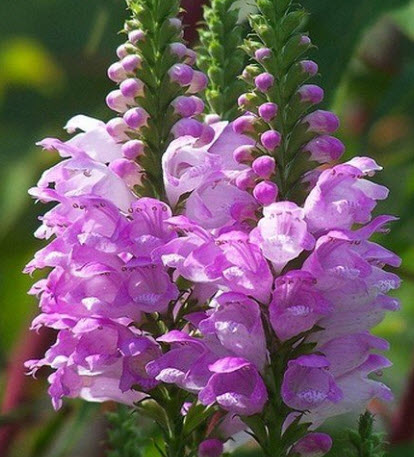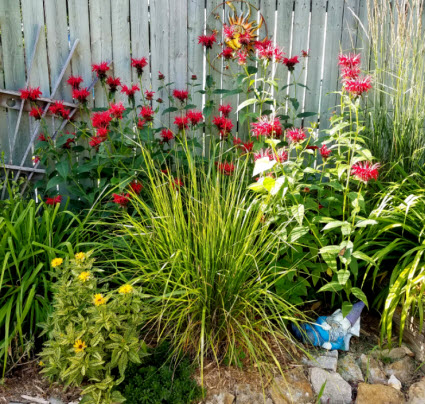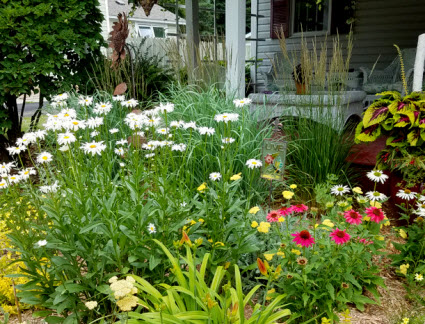Click below to listen to my 2 min. Garden Bite radio show: What goes with who?
Recently I posted on Facebook that I’d like to hear from YOU on what topics you’d like me to cover. I got some great suggestions including what plants get along and what plants might not… First thing that comes to mind are invasive plants. Monarda and Obedient Plant are at the top of the list, as is Lily of the Valley for shade.

IF you want don’t mind a plant creating your garden, then buy that invasive or “easy spreader” as they are referred to in plant catalogs. If you want creative control, then be careful. Personally I love my monarda… unless it gets powdery mildew. There are cultivars that are resistant.
Now, what are some lovely plants together? Personally, I LOVE ornamental grasses, they really do go with everything. Mixing textures adds another dimension. I like the big blooms of daylilies with the soft ethereal look of some of the panicum and switch grasses. Switch grasses will tolerate shade. Carex grasses even more so.
 In the photo above is Monarda ‘Jacob cline’, switch grass in the forefront, heliopsis is the yellow flower with the variegated leaves, and sedum is the dark green succulent at the bottom. I also have dayliles and Karl Forester grass too.
In the photo above is Monarda ‘Jacob cline’, switch grass in the forefront, heliopsis is the yellow flower with the variegated leaves, and sedum is the dark green succulent at the bottom. I also have dayliles and Karl Forester grass too.
Of course coneflowers and daisies also look lovely with grasses, the shades of white in Daisies add a nice contrast to bright colored coneflowers.

In the shade garden, hostas are like the sun-loving ornamental grasses, they look good with anything.
- Bleeding hearts
- snakeroot
- heuchera
- wild indigo
- spiderwort
- ligularia
One plant that can be a bit difficult, although it’s lovely, is Astilbe. I say this because they really do like moister conditions. I lost a couple of them because I didn’t water them in a drought.
And then there’s the Black Walnut tree. I have one, I do not like it for a variety of reasons. In particular is the toxic juglone it produces. There are a number of plants that will simply die when planted too close, others that will tolerate it. I have a link to the University of Wisconsin Extension with a list. It is not comprehensive and is based on observations, not documented facts, still… it’s a great guide.
If you have questions, comments or suggestions, you can always find me on my Garden Bite with Teri Knight facebook page!
